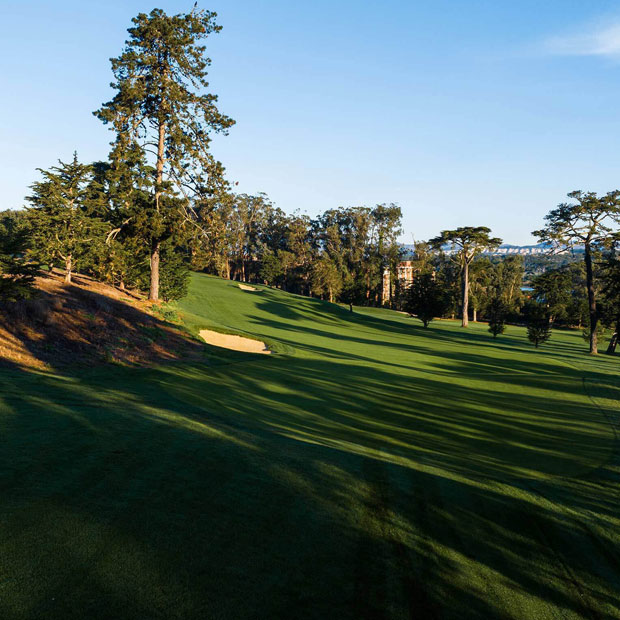The Philadelphia School of Golf Course Architecture
A profile of an influential group of Golden Age golf architects


As golf’s popularity boomed in the early 1900’s, the need for new golf courses grew and the lack of architects was glaring. Neighboring metroplexes, New York City and Boston, boasting the spectacular championship tests of National Golf Links of America, the Garden City Club and Myopia Hunt Club, were comparatively stronger. Philadelphia was in desperate need for a great course of its own. Philly’s problem was exposed at the annual Lesley Cup, a competition where the best golfers from Philadelphia would go head-to-head with the best players from New York City. After several years of drubbings, a few of Philadelphia’s top players pointed to the lack of a local championship test as the reason for their losses and began discussing the fine points of architecture and exploring architecture projects in their backyard. This grouping of gentlemen became known as the Philadelphia School of Architecture, and together they would build many of America’s most iconic classic golf courses.

One of the crowning achievements of the Phlily School was the collaborative effort at Pine Valley - shown here is the 5th. Photo Credit: Simon Haines
The membership of the Philadelphia School included four Philadelphia natives Hugh Wilson, A.W. Tillinghast, George Crump, and George Thomas; one Boston transplant, William Flynn; and one Pittsburgh resident, William Fownes. The clear theme that emerged from this transcendent group of architects was their unique ability to build ageless championship golf courses.
Hugh Wilson
Wilson was the captain of the Princeton golf team, and following graduation returned to Philadelphia where he was commissioned to head up the building of the Merion Cricket Club’s new golf course after the club decided to abandon their old one. Wilson poured his heart into Merion, which would go down as one of the Philadelphia School’s best designs. Wilson leaned on the group, consulting with them throughout the process and even adding Flynn as his chief engineer for the project.
{{content-block-philadelphia-school-of-golf-architecture-001}}
A.W. Tillinghast
Possibly the most prolific architect of the group, Tillie, became the master of building championship golf tests. Tillie was a great player and valued the tee-to-green game, which shows in his designs. They are among the sternest tests of golf in the world. His design portfolio is expansive but highlighted by the likes of Winged Foot (both courses), Baltusrol (both courses), San Francisco Golf Club, Bethpage Black and Somerset Hills, just to name a few. Our full profile on A.W. Tillinghast
{{content-block-philadelphia-school-of-golf-architecture-002}}
George Crump
Crump got into the architecture game when he sought to build a course that would have a longer golf season. He settled on building a course that you may have heard of in the sand hills of New Jersey, Pine Valley. Like Hugh Wilson’s Merion, Pine Valley would be Crump’s first and only foray into architecture as he would pass away before the completion of the project. The Philadelphia School shines at Pine Valley’s design because Crump was the ultimate collaborator. He would tirelessly pick his friends’ brains and took his favorite ideas from the great architects. At Pine Valley, you can see strong design characteristics from each of the members of the Philadelphia School throughout the 18 holes.
{{content-block-philadelphia-school-of-golf-architecture-003}}
George C. Thomas
Born into a wealthy Philadelphia family, Thomas got an early start at architecture by first designing a 9-hole course in 1905 on the site which would later be redesigned and become the Kittansett Club. Thomas’ next crack would come on his family’s estate in Philadelphia which today stands as Whitemarsh Valley Country Club. Then, he headed to the west coast where he left his strongest marks designing Los Angeles’ finest courses Riviera C.C., Los Angeles C.C. North Course and Bel-Air C.C.. Listen to our Podcast on George Thomas with Tom Doak here
{{content-block-philadelphia-school-of-golf-architecture-004}}
William Flynn
The only member of the Philadelphia School who wasn’t born in Pennsylvania was the Massachusetts native, Flynn. Flynn’s strongest design trait was his ability to effortlessly route his courses, maximizing each site’s natural features while creating a great variety of holes. Flynn is often overlooked in the discussion of the greatest architects, but with a roster that includes the likes of Shinnecock Hills, Cherry Hills, The Country Club and Lancaster C.C., he belongs with Macdonald, Raynor, Ross and Tillinghast. Read our full William Flynn profile.
{{content-block-philadelphia-school-of-golf-architecture-005}}
William Fownes
Fownes would regularly make the trek across the state of Pennsylvania to attend the legendary architecture discussions in Philadelphia. The Pittsburgh native spent most of his time with his father, Henry Fownes, perfecting their home course, the great Oakmont C.C. Upon George Crump’s early passing, Fownes became an integral part of the completion of Pine Valley as he sat on the board of directors at the great course.
{{content-block-philadelphia-school-of-golf-architecture-006}}
Together, these men designed well over 300 courses and have an astounding 27 courses in Golfweek’s Top 100 Classic Courses to their names. Beyond their great golf courses, they left a lasting effect on the Golf Association of Philadelphia which boasts one of the strongest contingents of amateur golfers in the country, a credit to the many great hometown tests created by the Philly School. Their collaboration and free flow of ideas helped lead to the growth of the game of golf, and their timeless design principles provide endless opportunities for generations of architects to study for years to come.
Leave a comment or start a discussion
Engage in our content with thousands of other Fried Egg Golf Club Members
Engage in our content with thousands of other Fried Egg Golf Members
Get full access to exclusive benefits from Fried Egg Golf
- Member-only content
- Community discussions forums
- Member-only experiences and early access to events












Leave a comment or start a discussion
Lorem ipsum dolor sit amet, consectetur adipiscing elit. Suspendisse varius enim in eros elementum tristique. Duis cursus, mi quis viverra ornare, eros dolor interdum nulla, ut commodo diam libero vitae erat. Aenean faucibus nibh et justo cursus id rutrum lorem imperdiet. Nunc ut sem vitae risus tristique posuere. uis cursus, mi quis viverra ornare, eros dolor interdum nulla, ut commodo diam libero vitae erat. Aenean faucibus nibh et justo cursus id rutrum lorem imperdiet. Nunc ut sem vitae risus tristique posuere.